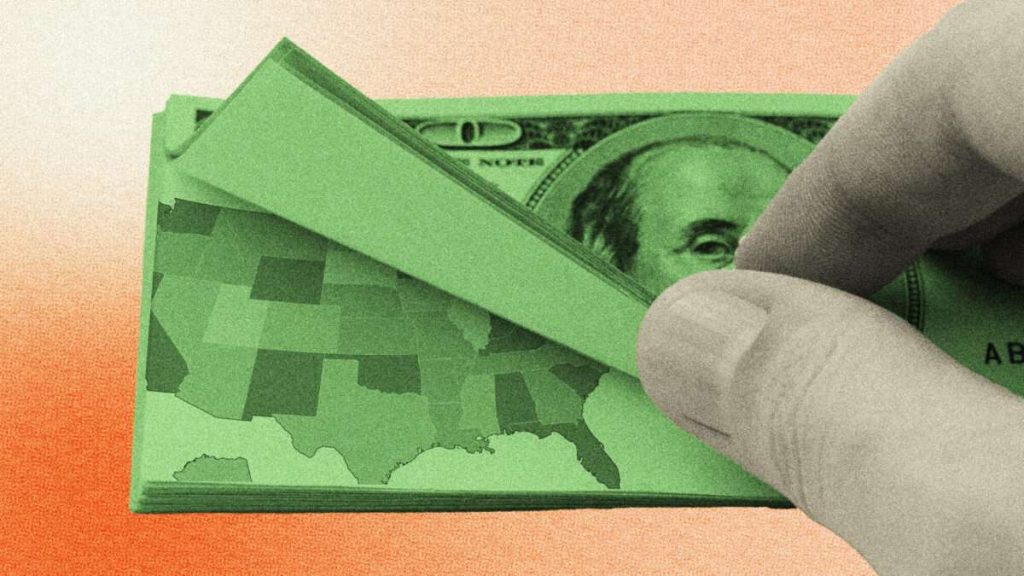An old saying has it that he who takes the king’s coin becomes the king’s man. The idea is that rulers expect obedience in return for money disbursed. That has important implications in a country founded on the ideal of independence from intrusive government but whose citizens are increasingly dependent on the public teat. With taxes collected from some repurposed as transfer payments to other members of the public, a growing share of Americans are becoming the king’s men.
Soaring Dependency in Recent Decades
“Income from government transfers is the fastest-growing major component of Americans’ personal income,” according to a September report from the bipartisan Economic Innovation Group (EIG). “Nationally, Americans received $3.8 trillion in government transfers in 2022, accounting for 18 percent of all personal income in the United States. That share has more than doubled since 1970.”
As of 1970, the report’s authors found, people in less than 1 percent of counties in the United States received a quarter or more of personal incomes from transfers. “These were the country’s most economically distressed corners.” That number rose to 5 percent by 1990, 10 percent in 2000, and then soared. In 2022, a majority of counties—53 percent—received a quarter or more of personal incomes from transfers. Nine percent of counties received less than 15 percent of income from transfers in 2022—down from 86 percent in 1970.
The significant rise in the share of personal income represented by government payments occurred because they are no longer targeted at just the “most economically distressed.” The biggest growth in transfer payments comes in the form of entitlement programs linked to old age and retirement.
An Older Population Fuels Reliance on Government
“Aging is an especially important driver of the accelerated growth of the transfer share since the Great Recession,” note report authors Kenan Fikri, Sarah Eckhardt, and Benjamin Glasner. “In percentage point terms, the 65 and over share of the population rose as much in the 10 years from 2010 to 2020 as it did in the 50 years from 1960 to 2010.” Whereas 9.8 percent of the population was 65 and over in 1970, seniors made up 17.3 percent of the population as of 2022.
As a result, the largest category of transfer payments is Social Security, followed by Medicare. But economic downturns continue to fuel growth in government payments, subject to a ratchet effect that sees expenditures rise but never fully roll back.
“Total transfer income has emerged permanently higher from each recession since at least the 1970s,” note the authors. “The resulting stair-step pattern suggests that each downturn leaves a legacy of expanded safety net programs and participation in its wake.”
Medicaid, which provides healthcare for those with limited resources, is the third-largest category. It’s driven by expansion of the program under Obamacare and by rising medical costs that also affect Medicare. “Medicaid is the fastest-growing component of transfer income,” adds the report.
Separately, the Foundation for Government Accountability finds that “total spending on Medicaid expansion has surpassed $1 trillion nationwide—$574 billion more than expected.”
Even so, the EIG report emphasizes that “Medicaid expansion had only three quarters the effect on transfer spending annually as a single percentage point increase in the share of the population aged 65 and over.” Seniors are growing as a share of the U.S. population, cashing in on Social Security and Medicare, and that’s the main driver of dependency on government payments.
Also included in the analysis are programs including veterans’ benefits, the earned income tax credit, Supplemental Nutrition Assistance Program, Supplemental Security Income, unemployment insurance, and Pell grants.
Most dependent on transfer payments are retirement communities, Native American communities, poor areas, and rural counties lacking thriving farming, energy, or tourist industries. “62 percent of counties with above-national elderly shares of the population, 65 percent of counties outside metro areas, and 79 percent of counties with above-national poverty rates fell into the high-transfer tier in 2022.”
The Scary Politics of Dependency
In their own analysis of the EIG data, The Wall Street Journal‘s Aaron Zitner, Jon Kamp, and Brian McGill emphasize that counties dependent on government payments have looked increasingly Republican over the last 20 years. “The map of government spending also helps explain the rise of Donald Trump,” they write. “He not only has promised to revive America’s economically stagnating communities, but to protect Social Security or Medicare from ‘even a single penny’ of cuts.”
More to the point, Americans’ growing reliance on payments from the government has pushed the transformation of American politics. Where once Democrats promised greater largesse and Republicans talked of a smaller, leaner state, now both major parties increasingly compete on visions of government that does things for people rather than getting out of the way of people doing for themselves. While they still constitute a minority, those dependent on the state are a growing proportion of the population and are receptive to politicians and programs that promise to keep the money flowing.
The EIG authors worry that growing reliance on transfer payments creates pressure for higher taxes that “could choke off the very economic activity that finances transfers.” They’re concerned the situation promotes stagnation as people come to value the security of regular checks over taking risks and building businesses that will create future prosperity.
At least as worrisome is that the cash flows create a client–patron relationship between Americans who receive government payments and the politicians who create and administer such programs. It’s a relationship that empowers the political class by eroding the economic independence of the people over whom they wield authority. It’s difficult to say “no” to those on whom you depend for handouts, and it’s not obvious that many office-seekers, or voters, want to alter that dynamic.
No Easy Fixes
To remedy what they highlight as a dangerous situation, the EIG authors favor tax hikes, entitlement reform, and “policies that foster economic dynamism and participation in the workforce.” But they admit an aging population poses severe challenges. And their recipe for higher taxes and growth-oriented industrial policy sounds like a call for more big, activist government that got us here and that inevitably cultivates dependency among the population to win support and exert control.
For Americans to reassert independence, they’ll have to want to cut reliance on government. Some certainly do, but it’s not clear that it involves enough people to change the country’s course.
The post Americans Grow Increasingly Dependent on Government Payments appeared first on Reason.com.





